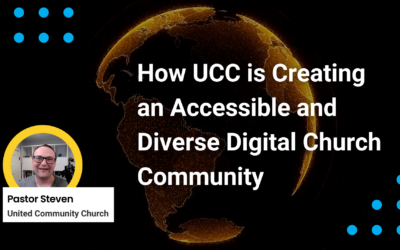Take a walk in just about any neighborhood in the US and you will find people from all over the world. Just as one example, my neighbors were born in Vietnam, China, Mexico, and the US. Probably your street or neighborhood has a similar variety.
There is so much good that comes from that diversity – from things as obvious as new foods to deep issues that grow from distinct worldview perspectives on human life.
But not everyone appreciates the diversity. Research shows four areas of fear that are common in nations that RECEIVE immigrants:
- fear that the newcomers will take over resources,
- fear of loss of normal patterns of life,
- fear of conflict
- fear that national traditions and culture might be lost.
Considering these common fears, how can Jesus’ Church show unity of faith that crosses the diverse backgrounds of immigrant communities?
Here are some ideas for local churches that want to build bridges of peace and understanding with nearby immigrant churches:
1. Start with the leaders.
Before the congregations try to grow closer, unity starts with the leaders. Look for times/ways to join for fellowship and prayer between the leaders of the congregations. That time together as leaders is invaluable at guiding churches to know how to interact with immigrant church groups.
But there is a caution! In the US, often our idea of prayer is quiet and restrained. Brothers and sisters from other nations can have very different ways of praying! As leaders, be open to trying each other’s forms of worship, and talk about the meaning of songs, prayers and customs.
2. Have occasional joint fellowship
Encourage members of different congregations to get to know one another, even across national boundaries. Fear of the unknown is replaced quickly when we no longer think of “immigrant” or “stranger” but instead think of “Jorge” or “Kim.”
3. Offer practical help.
When my wife and I arrived in Mexico several decades ago, we were blessed by a local congregation that accepted us and showed us how to live in their nation. Now that we are back in the US, we have done the same with believers who find themselves in our land. We show them how to pay their bills, how to find medical help, how to get a car registered.
Some of those very practical steps have two great benefits – they help the newcomers to feel at home, and they help those of us who live here to set aside the fear that our traditions will be lost. We are teaching others how to follow our traditions!
4. And in these days of COVID-19?
In the COVID-19 era, some of these suggestions might not be possible. You probably won’t be planning joint worship services any time soon!
But fostering personal interaction is still the key.
It might look like pastoral prayer times where pastors from many national backgrounds share their concerns with one another and the Lord through an internet meeting. It could look like an online worship or Bible study.
Language interpreting is in some ways even easier online than in person. One church I know uses a mixture of telephone and internet meeting rooms for interpreting between an English-speaking pastor and a Spanish language Bible study group!
The point is simple – even in our weird days of COVID, we can build bridges between people and between congregations with a bit of creativity and a lot of prayer!
Mark Hedinger has served in intercultural ministry for over 30 years. He is Executive Director of CultureBound which equips people for effective life and work in a culture and language different than their own.
Learn how to use the US Census data to discover the language needs of your church community.





